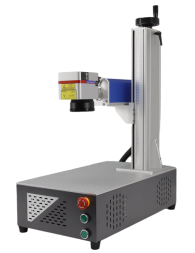
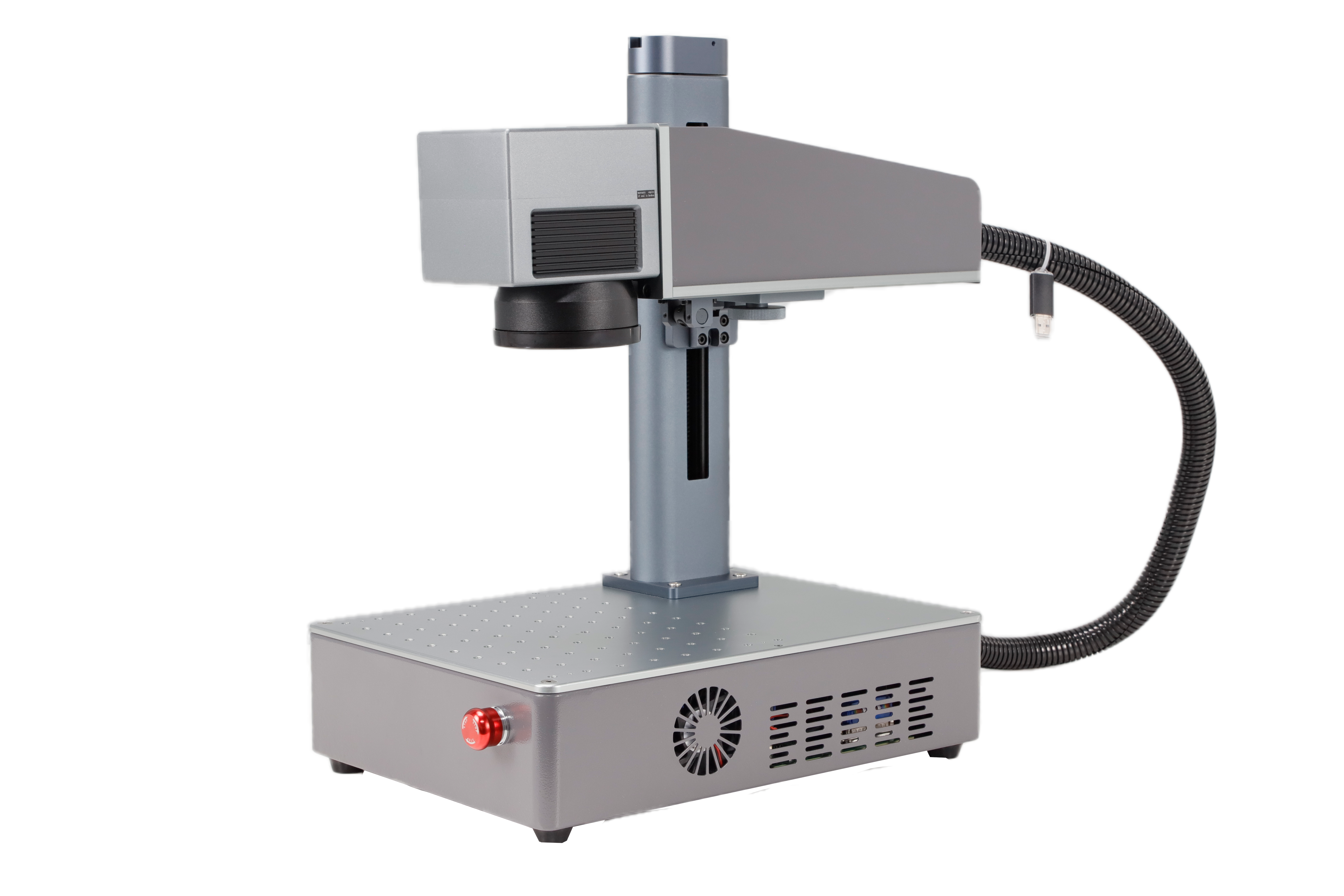
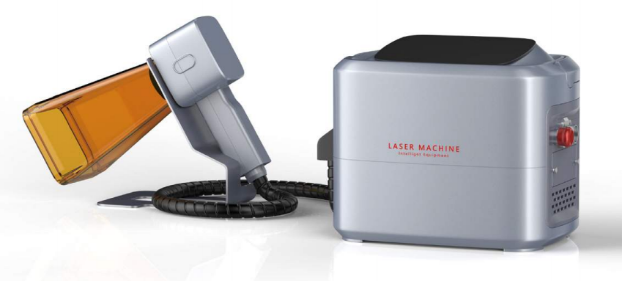

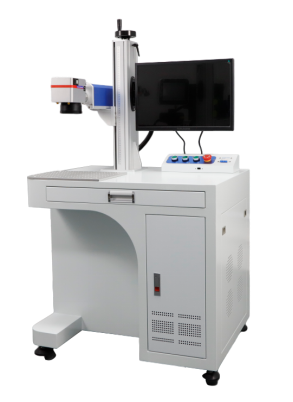
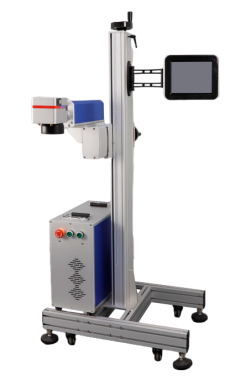
Fiber Laser Marker
Fiber Laser Marker
Working Principle
The fiber laser marker generates a laser beam with a wavelength of 1064nm using a fiber laser source. This beam is precisely focused on the surface of the target material through a galvanometer scanning system, inducing physical or chemical changes in the material and forming a permanent, high-precision mark.
Key Features
-
✅ Excellent Beam Quality
Produces sharp, high-resolution markings with improved accuracy. -
⚡ High Energy Efficiency
Offers superior energy conversion, requires no consumables, and lowers operating costs. -
🔁 Long Service Life
Fiber laser sources can operate for tens of thousands of hours with minimal maintenance.
Supported Material Range
-
🧲 Metals: Stainless steel, iron, copper, aluminum, gold, silver
-
🧱 Plastics: PC, ABS, PVC, PC+ABS, PES, and other engineering plastics
-
🎨 Other Materials: Painted surfaces, electroplated layers, oxides, coatings, silicon, nylon, ceramics, clay, etc.
Application Fields
Fiber laser markers are widely used in:
-
3C products (computers, communication, and consumer electronics)
-
Automotive parts
-
Electronic components and integrated circuits (ICs)
-
Electrical appliances
-
Precision instruments and equipment
-
Hardware products
-
Building materials
-
Glasses, watches, jewelry, and accessories
-
Aerospace and military applications
They are particularly suitable for high-speed, high-precision, and large-scale automated production lines, capable of marking graphics, text, barcodes, QR codes, and logos with consistency.
What Sets Fiber Lasers Apart
The key difference lies in the laser source. Fiber lasers use multiple air-cooled, low-power laser diodes as pump sources. These are combined into a rare-earth-doped optical fiber, which acts as the gain medium.
Fiber Bragg gratings are used as reflectors to form the laser cavity, enabling both pulsed and continuous-wave output. This design makes fiber lasers highly efficient, stable, and versatile for industrial marking.
Click the button below and get a custom quote

Product Description
Fiber Laser Marker
Working Principle
The fiber laser marker generates a laser beam with a wavelength of 1064nm using a fiber laser source. This beam is precisely focused on the surface of the target material through a galvanometer scanning system, inducing physical or chemical changes in the material and forming a permanent, high-precision mark.
Key Features
-
✅ Excellent Beam Quality
Produces sharp, high-resolution markings with improved accuracy. -
⚡ High Energy Efficiency
Offers superior energy conversion, requires no consumables, and lowers operating costs. -
🔁 Long Service Life
Fiber laser sources can operate for tens of thousands of hours with minimal maintenance.
Supported Material Range
-
🧲 Metals: Stainless steel, iron, copper, aluminum, gold, silver
-
🧱 Plastics: PC, ABS, PVC, PC+ABS, PES, and other engineering plastics
-
🎨 Other Materials: Painted surfaces, electroplated layers, oxides, coatings, silicon, nylon, ceramics, clay, etc.
Application Fields
Fiber laser markers are widely used in:
-
3C products (computers, communication, and consumer electronics)
-
Automotive parts
-
Electronic components and integrated circuits (ICs)
-
Electrical appliances
-
Precision instruments and equipment
-
Hardware products
-
Building materials
-
Glasses, watches, jewelry, and accessories
-
Aerospace and military applications
They are particularly suitable for high-speed, high-precision, and large-scale automated production lines, capable of marking graphics, text, barcodes, QR codes, and logos with consistency.
What Sets Fiber Lasers Apart
The key difference lies in the laser source. Fiber lasers use multiple air-cooled, low-power laser diodes as pump sources. These are combined into a rare-earth-doped optical fiber, which acts as the gain medium.
Fiber Bragg gratings are used as reflectors to form the laser cavity, enabling both pulsed and continuous-wave output. This design makes fiber lasers highly efficient, stable, and versatile for industrial marking.


